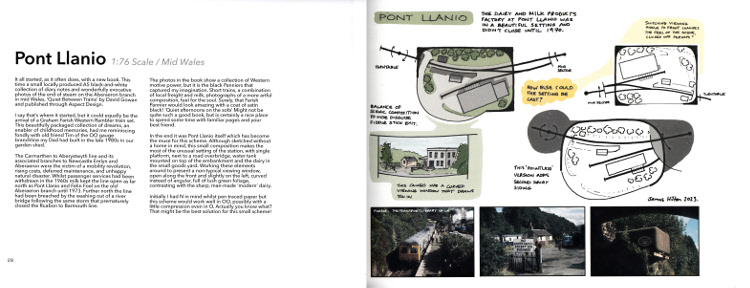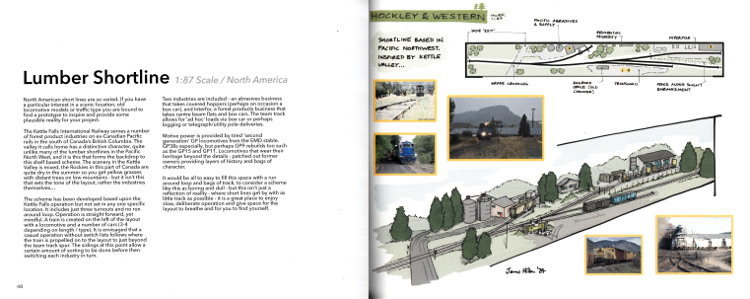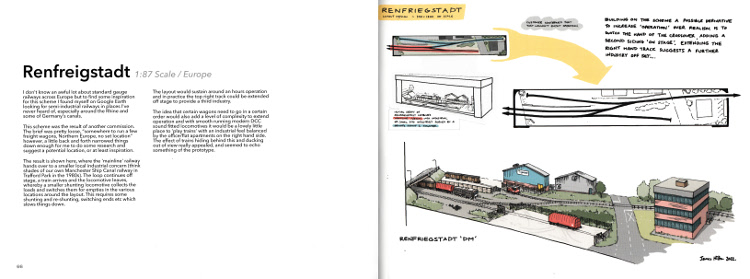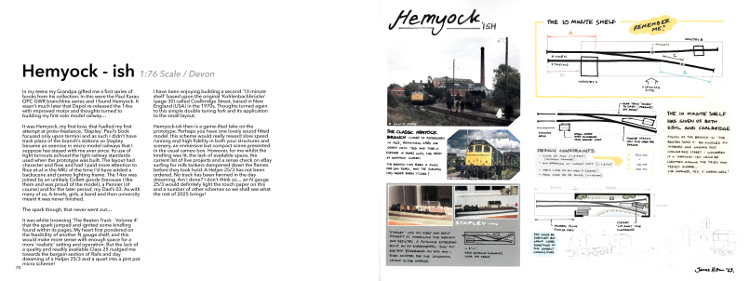Wild Swan Books
Small Layout Design Construction
James Hilton
Softback - 80 pages - £17.50
Contents- I love small layouts
- Composition, not cliche
- Thinking differently
- Not duration but quality that counts
- The fiddlestick is the rest of the world
- Physical realisation
- Building a cameo box is within reach
- Basic tools and assembly methods
- Giving your dreams a place to call home
- Plans
- Scottish Lost Termini [1:76]
- Port Llanio [1:76]
- Kohlenbachbrucke [1:87]
- Seahouses [1:76]
- Backwoods Branchline [1:87]
- Leatown [1:76]
- Welsh Mountain Railway [1:148/1:76]
- Workshop Cameo [1:87]
- Urban Grit [1:148]
- The Junction [1:87]
- Rushcliffe [1:76]
- Lumber Shortline [1:87]
- Ffestiniog [1:76]
- St.Blazey [1:148/1:76]
- Stourbridge [1:148/1:76]
- Dyserth [1:148/1:76]
- Irish Dream [1:76]
- Cider and Steam [1:148]
- Cameron Bridge [1:148]
- Severn Beach [1:148/1:43]
- Renfreigstadt [1:87]
- Modern Goods [1:148]
- More Mosslanda [1:148]
- Gerald Road [1:148]
- Isle of Wight [1:148]
- Sroda [1:76]
- Hemyock-ish [1:76]
Description
Two years on from his 'Small Layout Design Handbook', and with several additional modelling projects and commissions under his belt, in this new book James further explores the ideas behind small layouts, before describing how he builds them and then providing numerous new ideas and plans to fire readers' imaginations.
He describes how he has finally moved away from the idea that a small layout is a sort of "second best" that can be achieved in advance of a "main scheme", to a position where small layouts can be legitimately viewed and enjoyed as an entirely valid genre of their own.
Utilising the "Cameo" style presentation pioneered by the late Iain Rice, with models set on a stage with appropriate lighting, presentation and composition, James argues that simple and small does not need to mean boring. By first thinking through what it is that we are portraying and what sort of operation we are after, and then marrying this to an accessible space and our desired themes or models, a completely satisfying model railway becomes a real possibility.
Various practical considerations are explored, such as control, operation of points and couplings, and the satisfyingly named "fiddle sticks", setting the scene for the more detailed explanation that follows of how James builds his own layouts.
First listing and describing the tools that he himself uses, James suggests that we are best off creating our own baseboards and cameo boxes, rather than buying one of the popular "baseboard kits" in pre cut MDF or plywood. Apart from anything else, you won't have the worry of altering what someone else has done and potentially spoiling neat work, and when doing your own, you can create exactly the space and shape that your own ideas require.
Practical details of construction are next given, with helpful and informative sketches and photographs throughout. The various elements that create the layout, details of how to cut sheet material so that the machined straight edges are used to best effect, arrangements of the track exits to the fiddle area, how to arrange control elements and the important subject of lighting - what to use and how to place and control it. All together with a myriad of other thoughts and ideas, culminating in placement of the finished work in domestic settings.
The rest of the book, covering the majority of the 80 pages, is given over to 27 layout concepts, complete with track plans, sketches and accompanying words. Using a variety of prototypes and locations, each suggesting differing approaches to creating scenes and atmospheres while giving due consideration to operation, James provides ideas to give models a real sense of place and purpose.
As in his first volume, the themes and prototypes considered are wide ranging, covering narrow gauge, industrial and some North American and International subjects. All of them are written about in a clear and accessible style, full of encouragement, inspiration, ideas and information.



